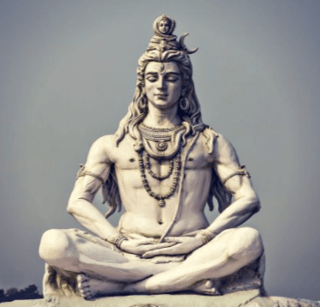Are mantras part of your mediation practice? You don’t have to be a great singer to chant mantras (you can even recite them silently) and once you get the hang of it, you’ll be blown away by how powerful they are.
What is Mantra?
Mantras are Sanskrit phrases, words or syllables that have a special significance. The word Mantra is made up of two syllables:
Man – mind/to think
Tra – a tool, instrument or vehicle
Together, the two syllables create a word that means ‘instrument of the mind’. When you chant a mantra, you invoke the essence of its meaning, making it a powerful technique for setting and manifesting intentions. For example, the Sanskrit word ‘Shanti’ means peace and, when you chant ‘Shanti’, you are manifesting the peace that is inherent in the sound.
How Do I Choose a Mantra?
Because mantra is a great way of focusing on a particular intention, choose a mantra that is aligned with your specific intention. For example, using the mantra “Om Shanti, Shanti, Shanti-hi” for bringing peace, or “Om Gam Ganapataye Namaha” for tapping into the obstacle-removing powers of the elephant-headed Hindu god Ganesh.
Mantras are often used for healing – we use them a lot in Yoga Therapy – and there is one especially powerful healing mantra called the Mahamrityunjaya.
The Mahamrityunjaya Mantra
The Mahamrityunjaya is a healing mantra that’s said to bring good health and longevity. It comes from an ancient sacred text called the Rigveda and is addressed to Shiva, the supreme being who represents the forces of transformation.
The Mahamrityunjaya Mantra
Om tryambakam yajāmahe
sugandhim puṣṭi-vardhanam
urvārukam iva bandhanān
mṛtyor mukṣīya māmṛtāt
Om. We worship and adore you, O three-eyed one, O Shiva. You are the sweet fragrance of life who nourishes us, restores our health, and causes us to thrive. As, in due time, the stem of the cucumber weakens and the gourd is freed from the vine, so free us from attachment and death, and do not withhold immortality.
Sometimes I chant the Mahamriyunjaya for self-healing, but I usually dedicate it to somebody I know who is sick and chant for their recovery. Traditionally, mantras are chanted 108 times (a significant number in yoga that reflects sacred cosmology, mathematics, geography and more), but you can also chant mantras in shorter rounds. I usually work with 12 -24 repetitions.
How to Chant Mantra
There’s no ‘right’ way to chant mantras. You can recite them out loud or silently. You can chant mantras while sitting or you can incorporate them into a simple asana practice. You can practice them at any time of day. It does help to prepare for reciting mantra, however. I like to start with some gentle movements to regulate my breath and then set a clear intention before chanting. Here’s how I prepare to chant the Mahamrityunjaya.
Chanting the Mahamrityunjaya
1. Noticing the breath: Lie down in Savasana on a warm and comfy surface. Spend 2 or 3 minutes lying there quietly and tuning in to the quality and rhythm of your breath.
2. Gentle movement with the breath (Cat to Cow): Try coming onto your hands and knees. As you inhale, tilt up your chin and curl up your tailbone towards the ceiling, dipping your belly towards the floor. As you exhale, round your spine and tuck your chin and tailbone under. Repeat this six times, following your breath. Make each successive exhale smoother and slightly longer.
3. Sitting comfortably: Find a comfortable seated position. If sitting cross-legged doesn’t feel good, sit up on a chair. Lengthen your spine and relax your shoulders.
4. Focusing on intention: Take a moment to remember why you’re chanting the Mahamrityunjaya. If you’re dedicating the chant to somebody else, bring a picture of that person into your mind and consciously dedicate the benefits of the practice to them.
5. Chanting: You can start by listening to a recording and chanting along in your mind. When you feel more comfortable, you can join in. Chant the mantra as many times as you feel comfortable – anywhere between 8 and 108 will do!
6. Completing the practice: When you’ve finished chanting, remember the person you are chanting for and consciously dedicate the benefits of the chant to them. Namaste.
DOWNLOAD THIS PRACTICE, INCLUDING A RECORDING OF THE MANTRA!

